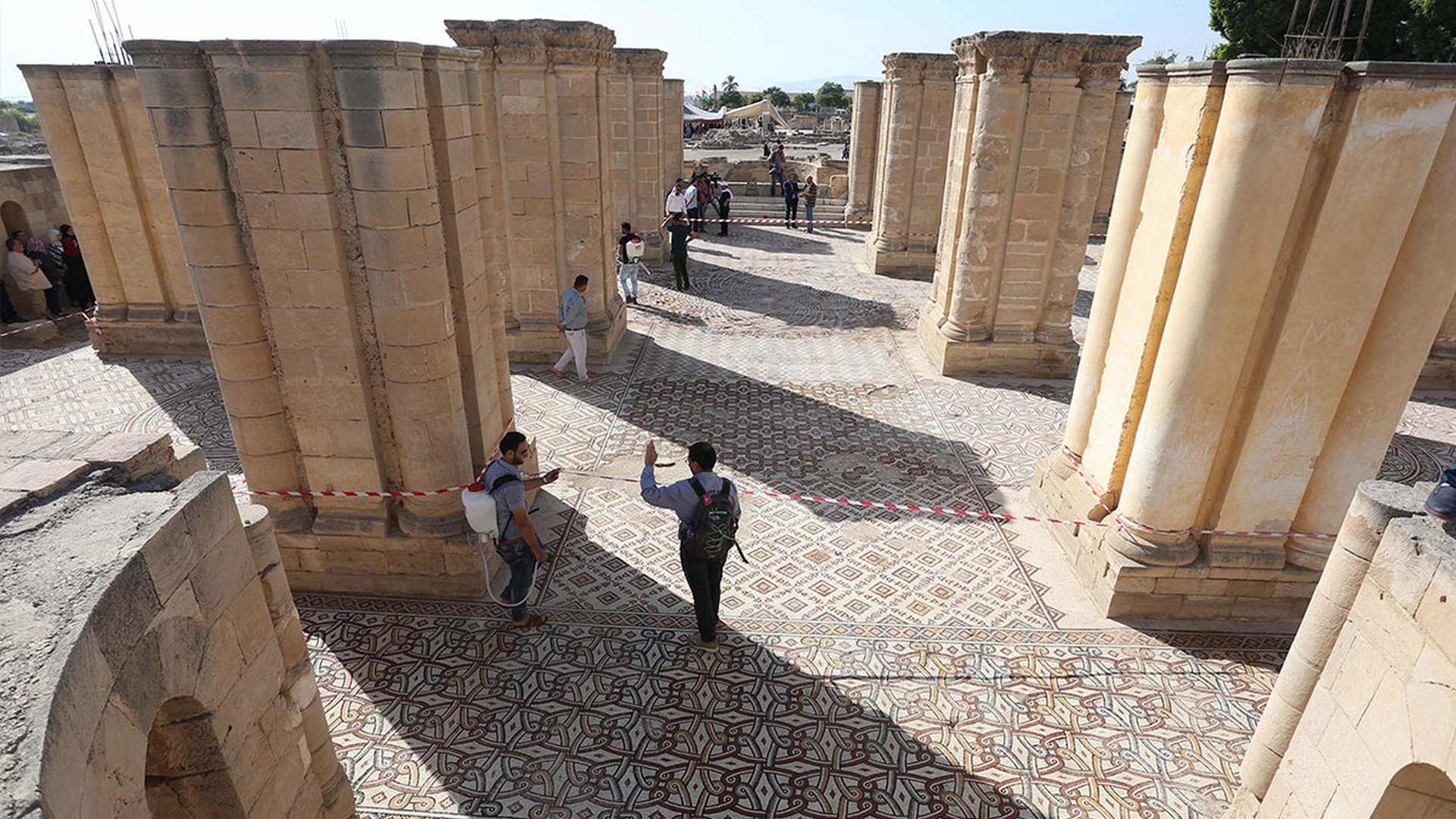Description
Property Name: Hisham bin AbdulMalek Palace, Qaser Hisham Archaeological Park, Jericho
Inventory No: 972-2-25
Date of infill of the inventory form: 2020-08-14
Country (State party): Palestine
Province: Jericho
Town: Khirbet El-Mafjar/Jericho
Geographic coordinates: 31°52’55.00″N
35°27’35.58″E
Historic Period: Umayyad
Year of Construction: 743-744 AD
Style: Umayyad
Original Use: Palace
Current Use: Archaeological Park
Architect: Unknown
Significance
The palace of Hisham bin Abdul Malik is located in the Palestinian city of Jericho. It is 3 km north of the city and is located in an area called Khirbet al-Mafjar. Hisham’s Palace is located in Palestine, to the northern side of the city of Jericho, built by the Umayyad Caliph Hisham bin Abd al-Malik bin Marawan, and this palace is considered one of the important monuments in Palestine. It houses the largest and most beautiful mosaic panel in the Middle East and the world, this painting is considered one of the largest and most important ancient mosaic panels in the world, which is still in its original location. Its area is about 827 square meters, and it consists of 38 colorful carpets of various shapes and colors with geometric and plant shapes. The painting was discovered in the thirties of the twentieth century and was covered under layers of dirt and remained so to protect it from climate influences until its restoration began a few years ago until 2016. The mosaics on the bathroom floor, along with the “tree of life” in the guest room, are among the most important attractions for tourists and visitors. This mosaic is considered one of the most beautiful ancient works of art in the world. Many of the carved decorations from the palace can be found in the Rockefeller Museum in Jerusalem.
Selection Criteria
ii. to exhibit an important interchange of human values, over a span of time or within a cultural area of the world, on developments in architecture or technology, monumental arts, town-planning or landscape design
iii. to bear a unique or at least exceptional testimony to a cultural tradition or to a civilization which is living or which has disappeared
vi. to be directly or tangibly associated with events or living traditions, with ideas, or with beliefs, with artistic and literary works of outstanding universal significance
State of Preservation
This palace was destroyed by a violent earthquake that struck the area around the year 749 AD, before its construction was completed. It was partially reused in the Abbasid and Ayyubid periods. The Palestinian Mandate Department of Antiquities excavated the site between 1935-1948, under the supervision of Dr. Dmitry Baramki and Dr. Robert Hamilton. Excavations were renewed in 2006 under the supervision of the Palestinian Antiquities Department. In 2016, with help from the Japanese International Development Agency, archaeologists and the Palestinian Ministry of Tourism and Antiquities restored and maintained the mosaics, which date back to the first half of the 8th century.
References
Palestinian Ministry of Tourism and Antiquities website: http://palestinecabinet.gov.ps/


